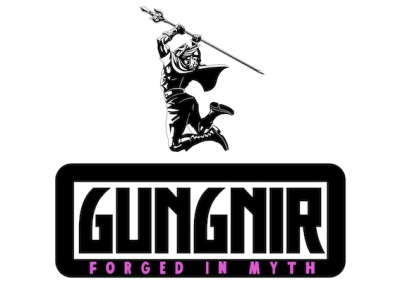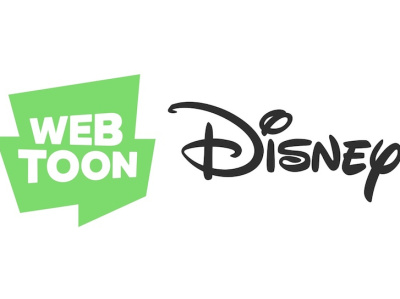 As predicted some weeks ago by ICv2, the summer of 2013 set a new all-time box office record in dollars with domestic receipts totaling $4.71 billion, a hefty 10.3% increase over 2012 that, even accounting for higher ticket prices, meant that the number of admissions went up 6.6% over last year. Still, as ICv2 forecast, this was not a stellar season for Hollywood, since the studios spent a lot more than they did in previous years, releasing for example more than 50% more films with budgets of over $100 million than in previous summer seasons.
As predicted some weeks ago by ICv2, the summer of 2013 set a new all-time box office record in dollars with domestic receipts totaling $4.71 billion, a hefty 10.3% increase over 2012 that, even accounting for higher ticket prices, meant that the number of admissions went up 6.6% over last year. Still, as ICv2 forecast, this was not a stellar season for Hollywood, since the studios spent a lot more than they did in previous years, releasing for example more than 50% more films with budgets of over $100 million than in previous summer seasons. The result of all this production was a glutted summer movie schedule that provided relatively few big winners, more than a handful of major flops, and lots of films that either broke even, made a little bit of money, or will have to make up a shortfall on disc. Actual determination of profitability rests with the studios that rarely release exact production costs, and when they do, never include the amounts spent for marketing and promotion. Even the old rule of thumb that a film has to double its production and marketing cost worldwide to break even no longer applies in every case since it is based on studios getting approximately 50% of gross ticket revenue (exhibitors and distributors get the rest), something that is clearly not happening in the burgeoning Chinese market where Hollywood takes home just a quarter for every dollar spent on admissions (see "Hollywood’s Dispute With China Near Settlement"). With this percentage in mind, adjustments have to made to the profitability calculations of films like Guillermo Del Toro’s Pacific Rim that packed them in during its record Chinese run.
Among the big budget behemoths released this summer superhero films fared well. The number one film of the summer season (and of 2013 so far) is Disney/Marvel Studios’ Iron Man 3. The only domestic film of the year to earn more than $400 million, IM3, which was directed by Shane Black, took in a cool $1.2 billion worldwide.
Also successful was Zack Snyder’s Man of Steel, which successfully rebooted the Superman franchise. Man of Steel is the #3 highest grossing film of 2013 so far with $290.8 million, and has earned $657.8 million worldwide. Still with a production cost of $225 million and marketing expenses that easily put its total cost in the $300 million range, it is also clear that Man of Steel is not a hit of the same order of magnitude of Christopher Nolan’s final two Batman films. Still no other superhero films from the summer of 2013 came close to matching Man of Steel’s performance, say nothing of that of IM3.
Man of Steel did top IM3 as a sales driver of graphic novels. DC had a major publishing program in place to take advantage of MOS with a wide range of classic Superman graphic novels as well as an adaptation of the film, and while the Superman publishing slate didn’t perform as well as the Batman graphic novels in the wake of Nolan’s final two Batman films, they did do well, especially in the bookstore market. Marvel did a bit better than normal with Iron Man 3, which flashed a bit in the bookstore market early in the summer, but nothing commensurate with its massive worldwide box office take or when compared with what DC accomplished with Superman.
It is arguable that Mark Millar and John Romita, Jr.’s Kick-Ass 2 did better as a sales driver in bookstores than it did in theaters. The sequel earned just about half as much domestically as the original Kick-Ass did back in 2010, and its $50.5 million worldwide take isn’t enough to offset the film’s $28 million production cost, to say nothing of any marketing expenses.
Fox’s superhero film The Wolverine looks like it will make money, just not very much. With a domestic total of just $128.4 million, the Hugh Jackman-starring film is in danger of posting the lowest domestic total of any X-Men film yet. Note: this article is strictly concerned with the financial performance of these films, and does not consider artistic or entertainment value. Fox kept production costs down on The Wolverine, which cost just $120 million after production tax credits from the Australian government, but it appears that the character of Wolverine, long one of the favorites of comic book fans, just doesn’t translate to the screen as well as say Spider-Man or Iron Man.
Of the rest of the summer of 2013’s comic book-based movies only 2 Guns, which is based on Steven Grant’s Boom Comics graphic novel, has a chance to break even, and it will have to perform well overseas to do so (the studio has wisely delayed its overseas debut to avoid a glut of product). Like Kiss Ass 2, Red 2 failed to generate the excitement that greeted the original film, and R.I.P.D. was one of the summer’s most abject failures, earning just $61 million worldwide versus a cost of $130 million.
The biggest flop of the summer is probably Disney’s The Lone Ranger, which according to The New York Times cost $375 million to produce and market (note that Disney only admitted to a production cost on the film of $215 million, so you can see that promotional costs on these blockbusters are far from insignificant). Since the movie has only taken in $239.3 million worldwide, Disney’s estimate of $160 to $190 million loss (see "Disney to Lose Up to $190 Million on 'Lone Ranger'") may turn out to be quite a bit below the actual figure.
Other key flops include Dreamworks’ animated feature Turbo, which cost $135 million to produce and has earned just $148 million worldwide, Sony’s After Earth, which cost $130 million and earned just $183 million, Sony’s White House Down, which cost $150 million and has taken in just $138 million, the YA-inspired The Mortal Instruments: City of Bones, which earned just $14 million in its five-day opening,
Guillermo Del Toro’s Pacific Rim has earned $404 million worldwide, but with production and marketing costs that amounted to $330 million, it is hard to imagine this film breaking even, especially since a sizable portion of its overseas earnings came from China.
There are a lot of films like Smurfs 2, Epic, and Star Trek Into Darkness that will likely break even, but not much more. J.J. Abrams’ second Star Trek film has earned $462.6 million worldwide, but with a production cost of $190 million (and unknown marketing expenses), STID is not likely to be make money for the studio without the aid of DVD and other ancillary revenues. Though widely touted as a hit, the Brad Pitt-starring World War Z from Paramount also falls in the "barely profitable" category with a worldwide take of $532 million balanced against a production cost of $190 million. Add in marketing costs and there’s not much, if anything left over.
Everything wasn’t a flop. There were some big hits including Universal’s Despicable Me 2, which cost just $75 million to produce and yet earned $806 million worldwide. Disney/Pixar’s Monsters University also did well, earning over $700 million worldwide, in spite of a glut animated features that saw Turbo, and Epic perform well below previous efforts from the same studios. Fast and Furious 6 did particularly well overseas, while The Heat and We're the Millers help up the tradition of successful "R" rated summer comedies, and Now You See Me salvaged the "Magic" genre by adding in a heaping helping of "caper" film.
One lesson the studios learned from the summer of 2013 is that low-budget horror films can provide excellent counter-programming even at a glutted box office. The high concept horror film The Purge brought in $84 million and cost just $3 million to make. Warner Bros. The Conjuring, which cost $20 million and had much more staying power at the box office than the "flash-in-the-pan" The Purge, has earned $240 million worldwide.
--Tom Flinn










